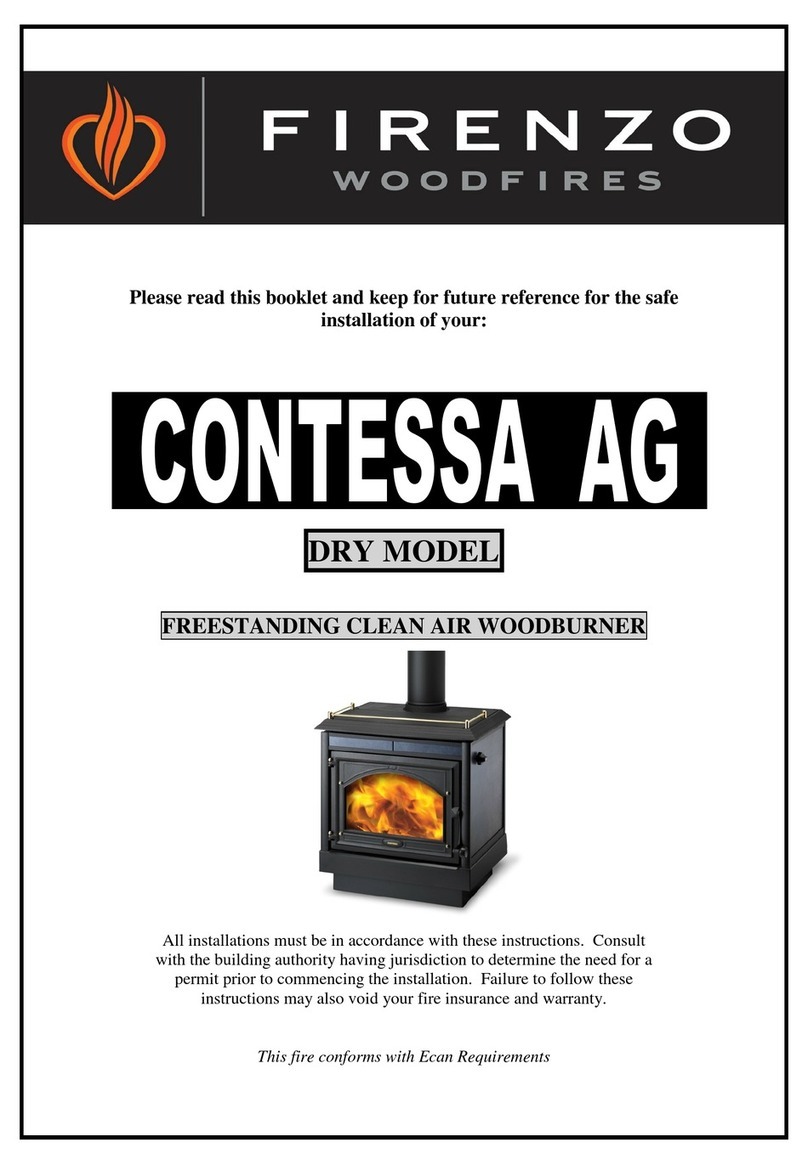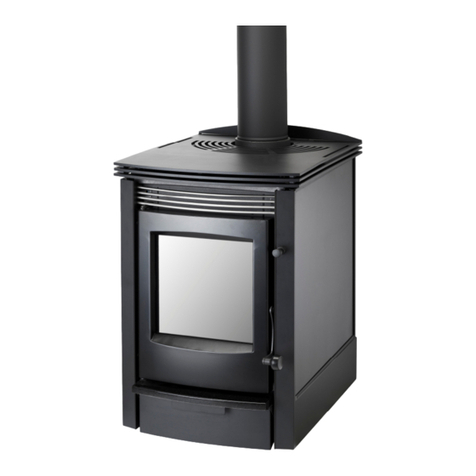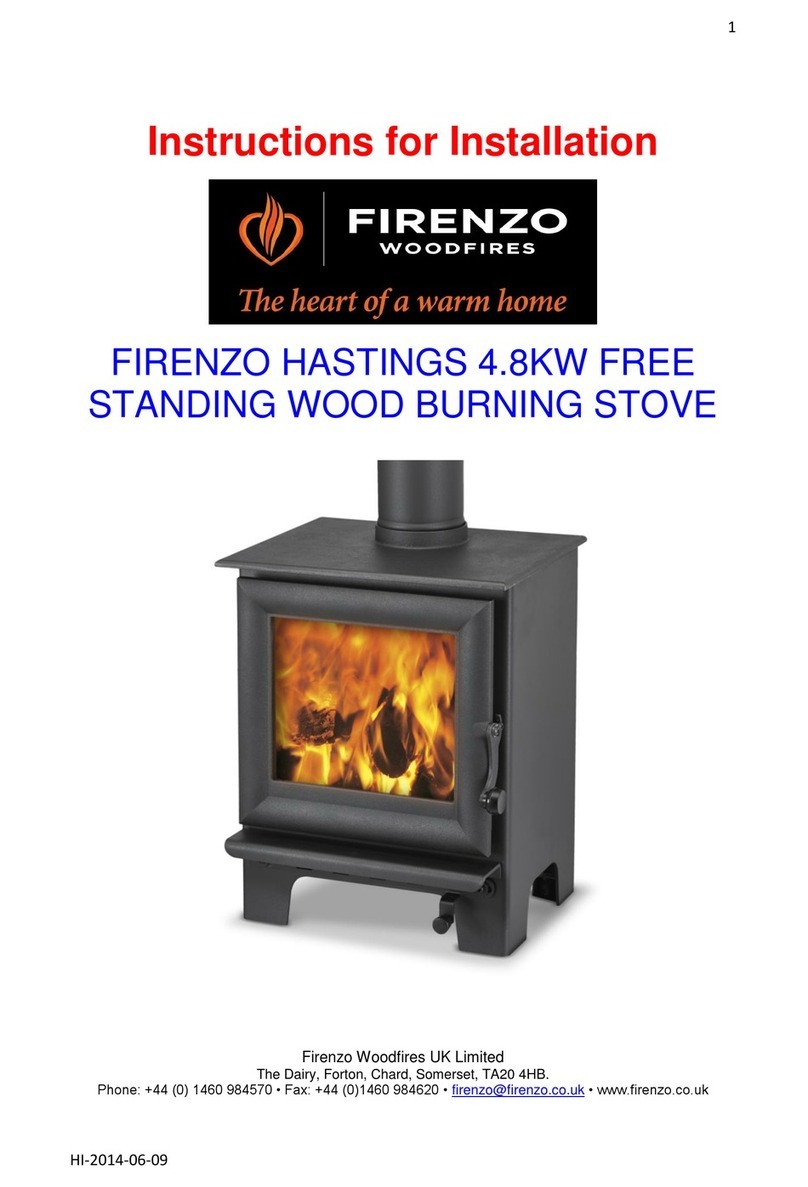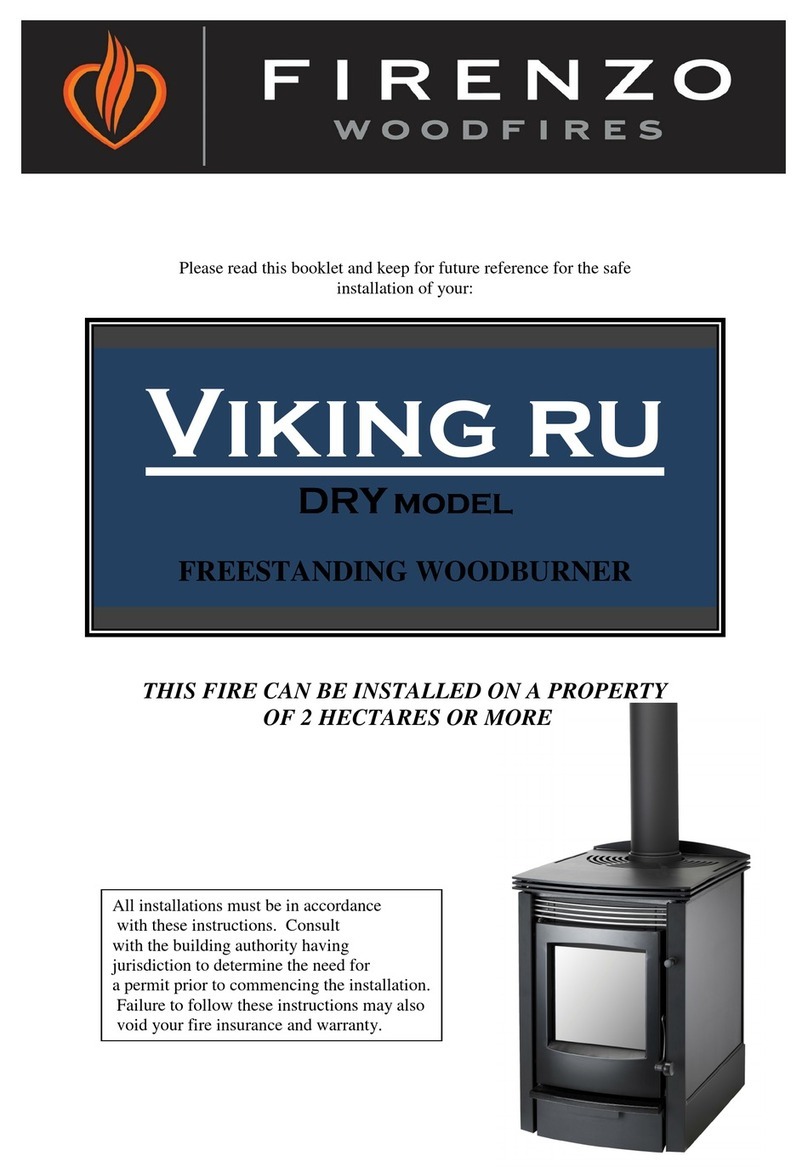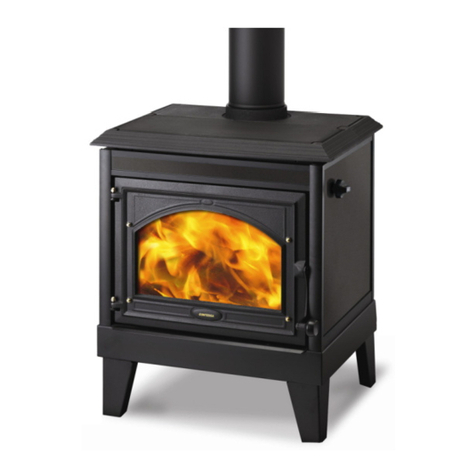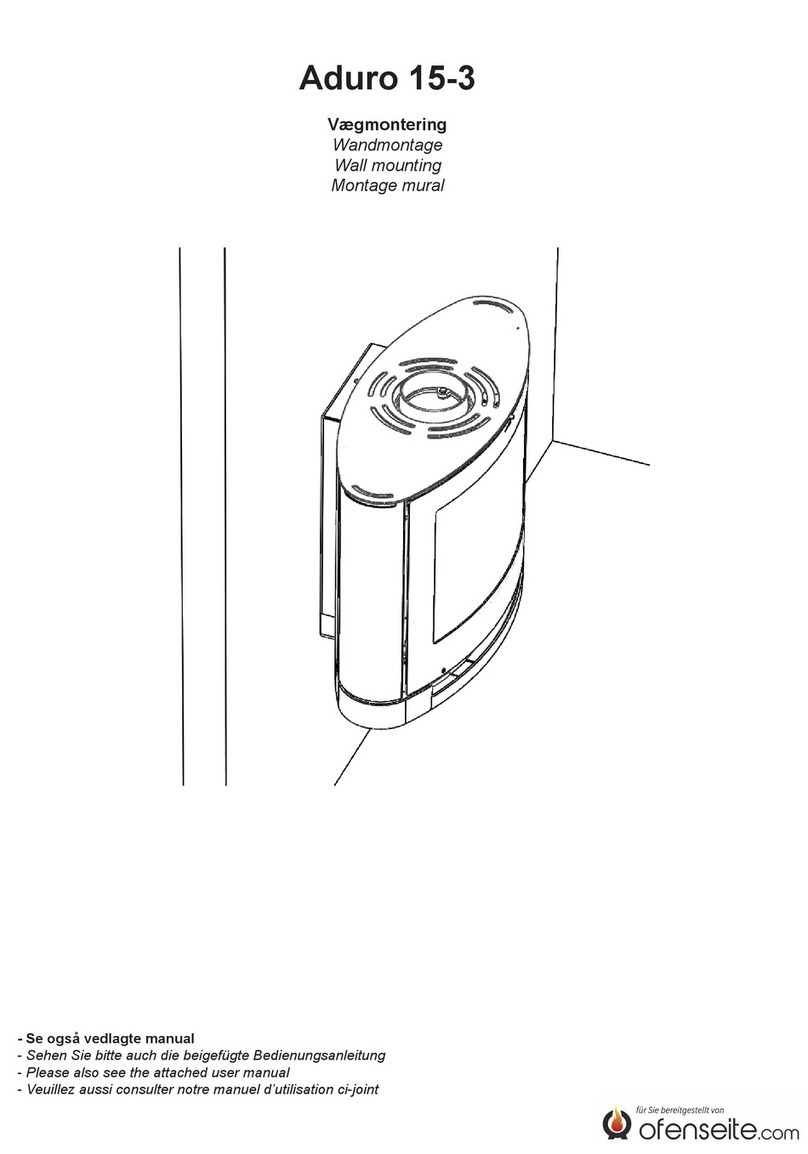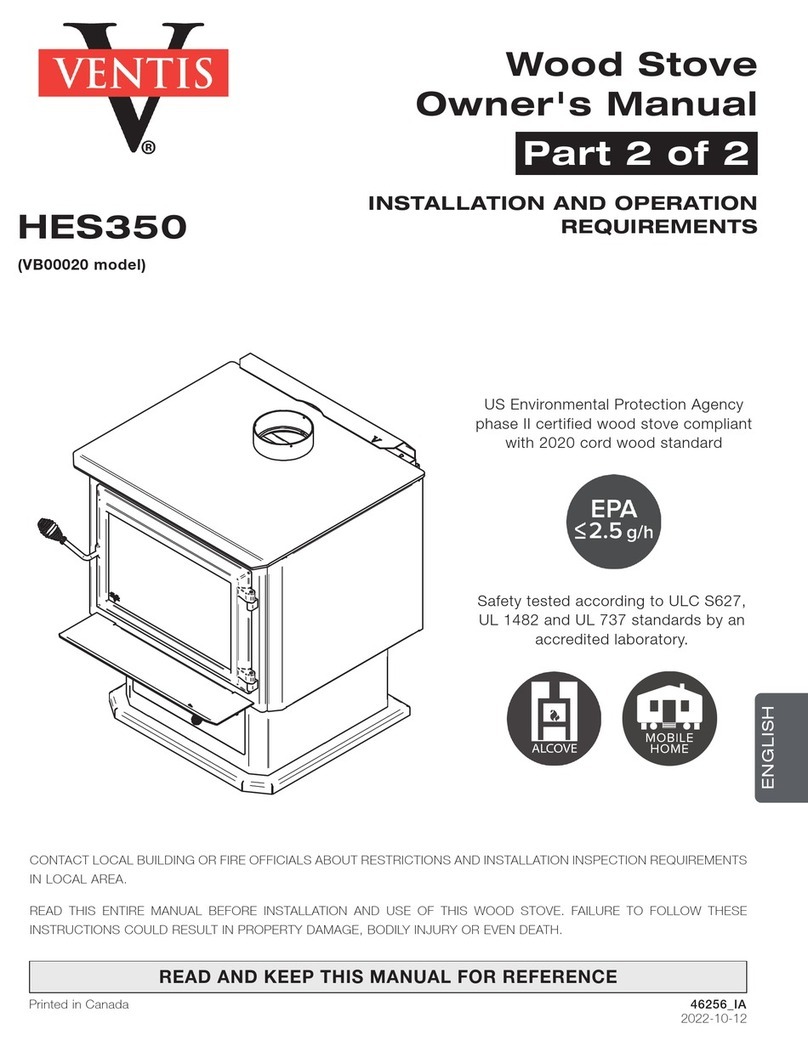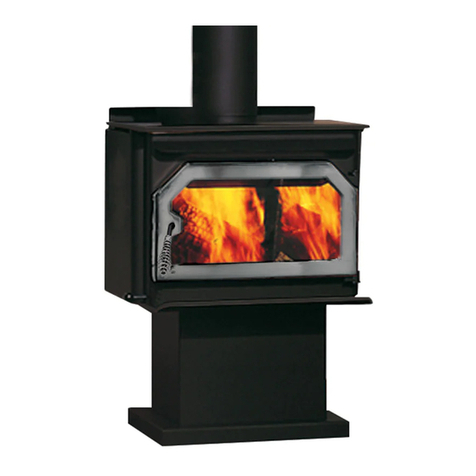
7
LKI-2013-05-14
If there is no existing chimney then any new system must be to the designation described above and in
accordance with Building Regulations Approved Document J.
A single wall metal fluepipe is suitable for connecting the stove to the chimney but is not suitable for use as the
complete chimney. The chimney and connecting fluepipe must have a minimum diameter of 150 mm and its
dimension should be not less than the size of the outlet socket of the stove.
Any bend in the chimney or connecting fluepipe should not exceed 45°. 90° bends should not be used.
Combustible material should not be located where the heat dissipating through the walls of fireplaces or flues
could ignite it. Therefore when installing the stove in the presence of combustible materials due account must be
taken of the guidance on the separation of combustible material given in Building Regulations Approved
Document J and also in these stove instructions.
If it is found that there is excessive draught in the chimney then a draught stabiliser should be fitted. Fitting of a
draught stabiliser will affect the requirement for the permanent air supply into the room in which the stove is fitted
in accordance with Approved Document J (see also combustion air supply).
6.2 Commissioning and handover
Ensure all parts are fitted in accordance with the instructions.
On completion of the installation allow a suitable period of time for any fire cement and mortar to dry out, before
lighting the stove. Once the stove is under fire check all seals for soundness and check that the flue is functioning
correctly and that all products of combustion are vented safely to atmosphere via the chimney terminal.
On completion of the installation and commissioning ensure that the operating instructions for the stove are left
with the customer. Ensure to advise the customer on the correct use of the appliance and warn them to use only
the recommended fuel for the stove.
Advise the user what to do should smoke or fumes be emitted from the stove. The customer should be warned to
use a fireguard to BS 8423:2002 (Replaces BS 6539) in the presence of children, aged and/or infirm persons.
6.3 Extractor fan
There must not be an extractor fan fitted in the same room as the stove as this can cause the stove to emit
smoke and fumes into the room.
6.4 Permanent air vent
The stove requires a permanent and adequate air supply in order for it to operate safely and efficiently.
In accordance with current Building Regulations the installer may have fitted a permanent air supply vent into the
room in which the stove is installed to provide combustion air. This air vent should not under any circumstances
be shut off or sealed.
6.5 Chimney cleaning
The chimney should be swept at least twice a year. It is important that the flue connection and chimney are swept
prior to lighting up after a prolonged shutdown period.
If the stove is fitted in place of an open fire then the chimney will require sweeping after a month of continuous
operation. This is a precaution to ensure that any “softer” deposits left from the open fire usage have not been
loosened by the higher flue temperatures generated by the closed stove.
6.6 Use of fireguard
When using the stove in situations where children, aged and/or infirm persons are present a fireguard must be
used to prevent accidental contact with the stove. The fireguard should be manufactured in accordance with BS
8423:2002 (Replaces BS 6539).
6.7 Use of operating tools
Always use the operating tools provided when handling parts likely to be hot when the stove is in use.
6.8 CO Alarms
Building regulations require that whenever a new or replacement fixed solid fuel or wood/biomass appliance is
installed in a dwelling a carbon monoxide alarm must be fitted in the same room as the appliance. Further
guidance on the installation of the carbon monoxide alarm is available in BS EN 50292:2002 and from the alarm
manufacturer‟s instructions. Provision of an alarm must not be considered a substitute for either installing the
appliance correctly or ensuring regular servicing and maintenance of the appliance and chimney system.


